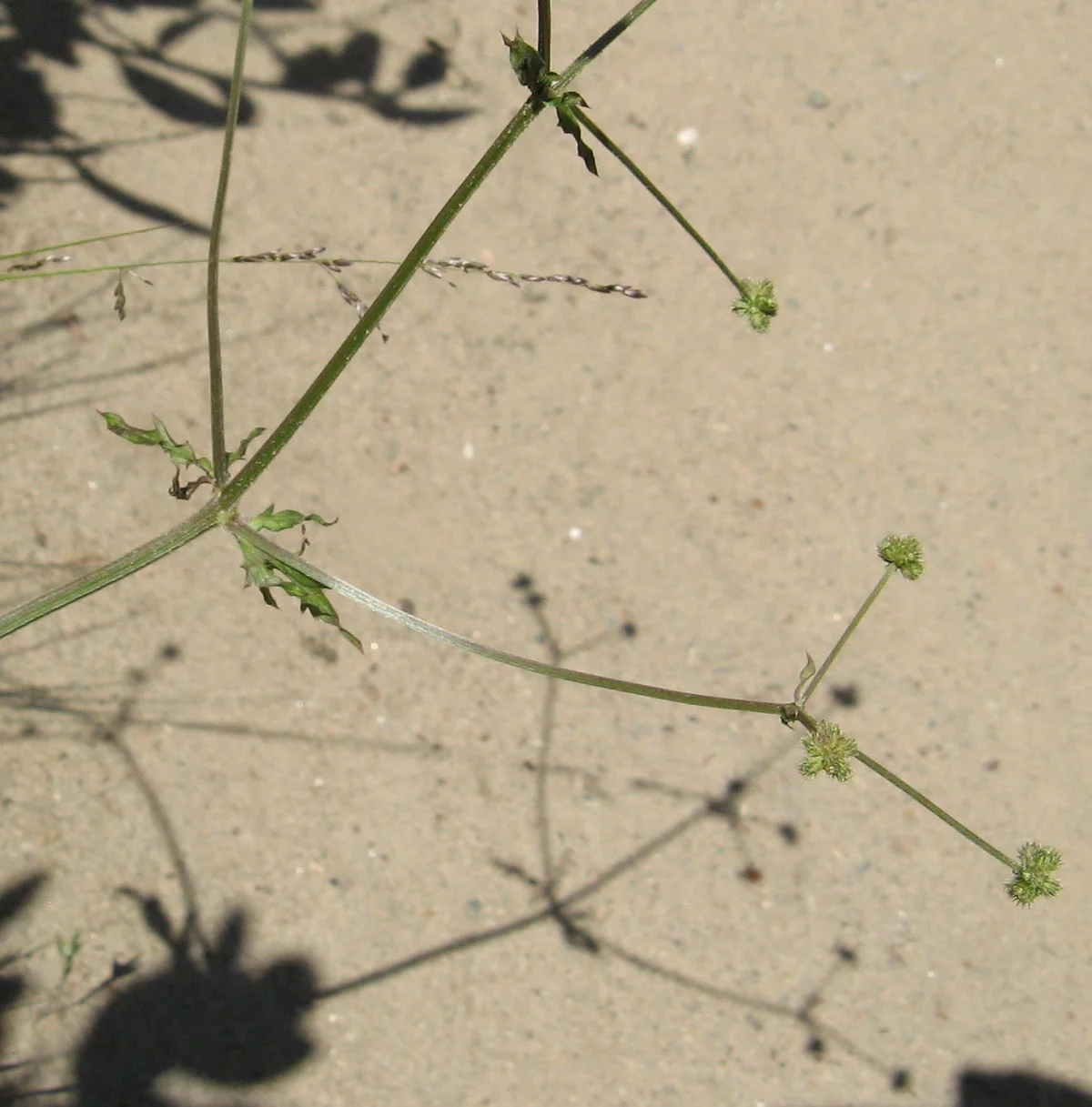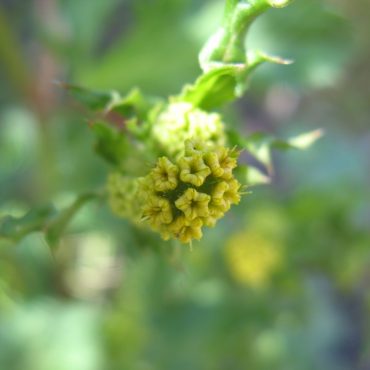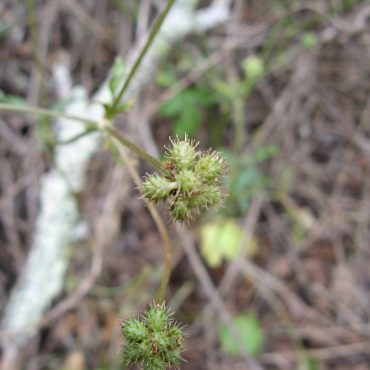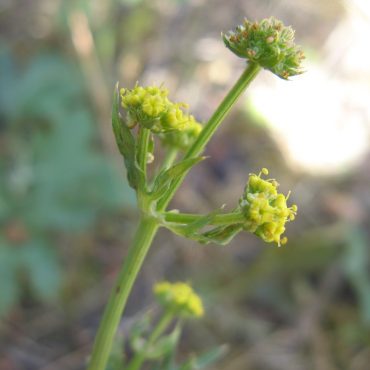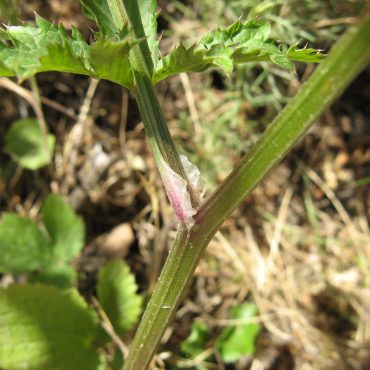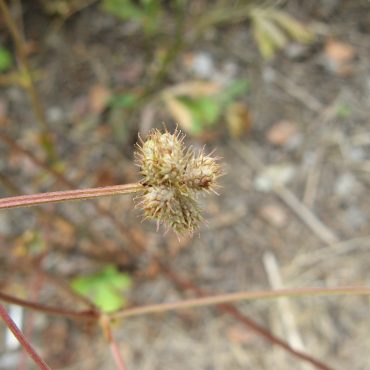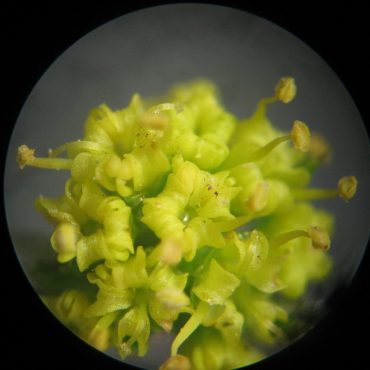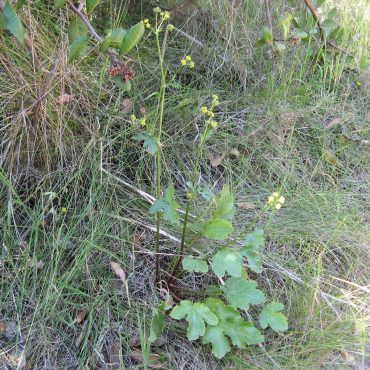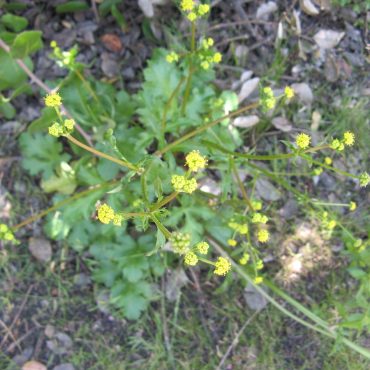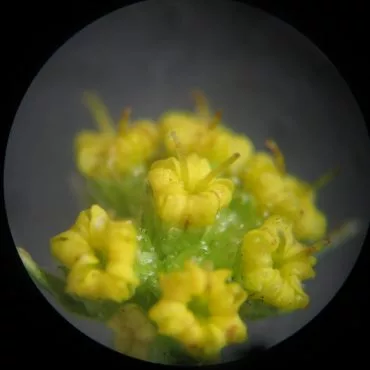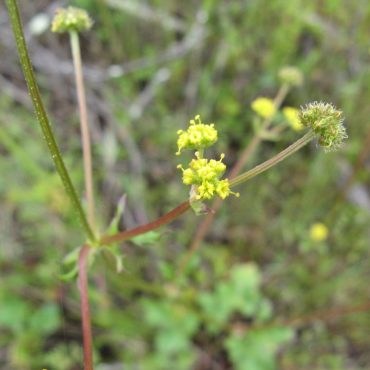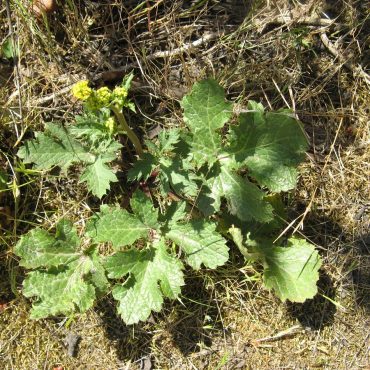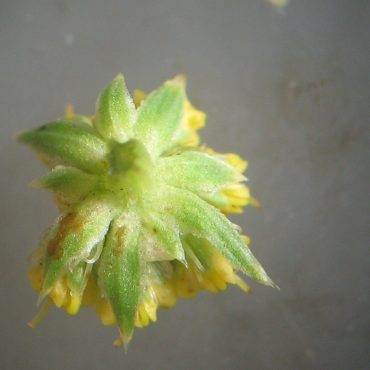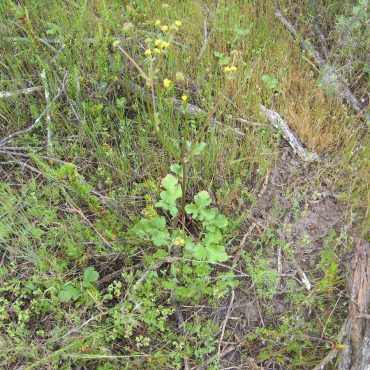Pacific sanicle (Sanicula crassicaulis) is a native perennial related to carrots and celery. It is an inconspicuous plant that might at first glance be mistaken for a small mustard. Tiny yellow flowers are born in small, spherical clusters at the ends of long, branching stems. Close examination shows an unusual flower structure, with the tips of the petals rolled inward – like a little girl with her hair in curlers. Seeds are armed with stout prickles that are hooked at the ends, perfect for hitching a ride on animal fur – or socks.
Perhaps the most unusual thing about Pacific sanicle, is its absence from the botanical and ethnobotanical (and even medical) literature. It has not been the subject of scientific studies and its most useful indigenous application seems to have been as a good-luck charm for gambling.

